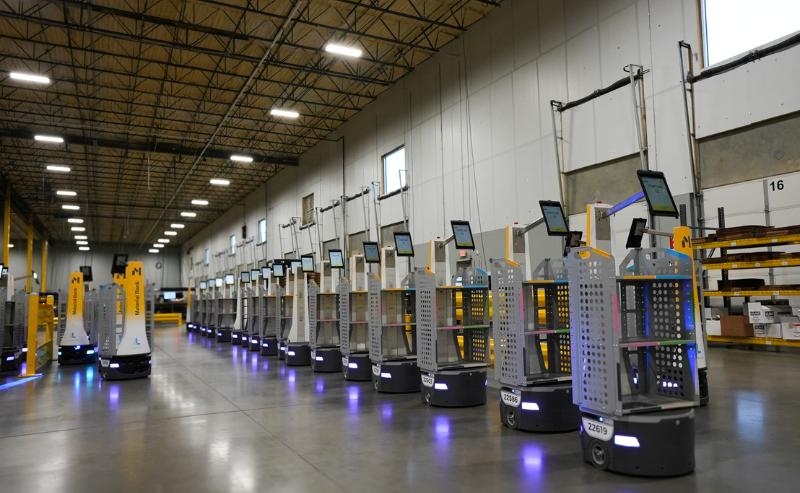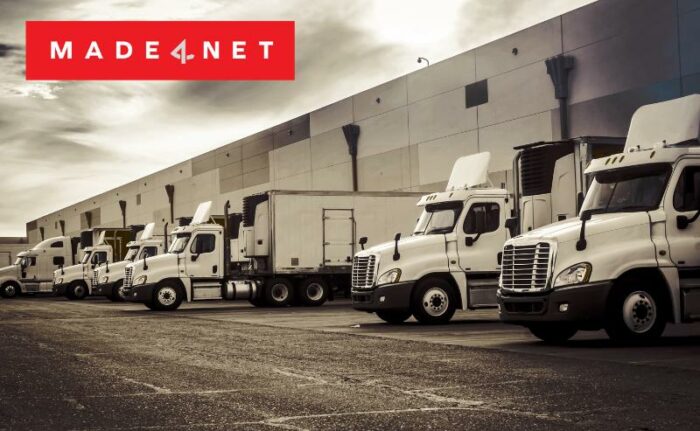
The numbers don’t lie. In our latest analysis of Logistics Management’s 2025 Industry Outlook Survey, we’re seeing a fascinating paradox: while 66% of companies are either taking a “wait and see” approach or “holding off” entirely to investments due to economic uncertainty, those who are moving forward are doubling down on automation and technology solutions.
This isn’t contradictory—it’s strategic. In volatile times, the companies that thrive are those that build resilience through intelligent automation, not those that simply wait for clearer skies.
The New Reality: Volatility as the Only Constant
The data reveals a market in transition. Average spending on materials handling equipment and information systems dropped 29% from 2023 to 2024 ($462,634 to $329,297), reflecting the caution that gripped the industry. But here’s what’s encouraging: 2025 projections show a 22% recovery to $401,699, with 34% of companies planning to increase spending in 2024-2025.
What’s driving this renewed confidence? It’s not optimism—it’s necessity. Companies are realizing that in uncertain times, automation isn’t a luxury; it’s a lifeline.
The Safety-First Imperative
When we look at what’s keeping warehouse leaders awake at night, safety tops the list at 84% of respondents—and it’s projected to climb to 86% over the next two years. This isn’t just about compliance or corporate responsibility, though those matter immensely. It’s about operational continuity.
Automated systems don’t get tired, don’t take shortcuts, and don’t compromise safety protocols. In an environment where labor availability concerns affect 63% of companies, automation becomes a critical safety multiplier, ensuring consistent performance even when human resources are stretched thin.
The Labor Challenge Meets Its Match
Speaking of labor challenges, the data tells a compelling story. While 63% of companies cite labor availability as a current concern (rising to 66% in two years), we’re seeing explosive growth in automated order fulfillment solutions:
- AGV/AMR order fulfillment picker-to-part systems: 54% adoption in 2023
- AGV/AMR order fulfillment part-to-picker systems: 52% adoption in 2024
- Robotic Technology order fulfillment part-to-picker systems: 46% adoption in 2024
- Robotic Technology order fulfillment picker-to-part systems: 42% adoption in 2024
These aren’t just impressive statistics—they represent a fundamental shift in how companies are thinking about workforce optimization. Rather than simply trying to hire more people, smart organizations are redesigning their operations around human-machine collaboration.
The Strategic Shift: From Point Solutions to Integrated Intelligence
Perhaps the most significant trend in our analysis is the move away from isolated automation toward comprehensive, integrated systems. Plans to use robotic technology for tasks like palletizing are actually declining (45% in 2023 to 33% in 2025), while plans to use AGVs/AMRs and robotic technology for order fulfillment are growing.
This shift reflects a mature understanding of warehouse automation. Companies have learned that buying individual automated solutions is like building a house one room at a time—you might end up with beautiful individual spaces that don’t work well together.
The future belongs to integrated warehouse management systems that orchestrate all these technologies seamlessly. When your WMS can coordinate AGVs, automated picking, and human workers in real-time, you’re not just automating—you’re creating an intelligent, adaptive operation.
Information Systems Investments Remain Steady
Information systems spending is projected to increase from 23% to 26% over the next 12 months. The technologies leading this charge are foundational:
- Bar coding and automated data capture (32%)
- Asset management systems (29%)
- ERP systems (26%)
- WMS platforms (19%)
This isn’t about flashy new robotics—it’s about the nervous system that makes all automation possible. Companies are recognizing that without robust information systems, even the most sophisticated automation becomes just expensive machinery.
Looking Forward: The Sustainability Imperative
The data reveals an interesting evolution in priorities. While immediate concerns like cost containment (80%) and throughput (61%) dominate today’s agenda, environmental sustainability is projected to surge from 39% to 51% importance over the next two years—the biggest projected increase of any concern.
This presents both challenges and opportunities. Warehouse automation, when properly implemented, is inherently more sustainable than manual operations. Automated systems optimize routes, reduce waste, minimize energy consumption, and extend the useful life of facilities through better space utilization.
Take Action: Strategic Automation in Uncertain Times
So how should warehouse leaders navigate this landscape? The data suggests a clear strategy:
Invest in foundational systems first. The companies seeing the biggest returns are those building robust information infrastructure—WMS, ERP, and data capture systems—before layering on advanced automation.
Focus on integrated solutions. Point solutions are giving way to comprehensive automation strategies. Your next automation investment should enhance your entire operation, not just solve one problem.
Prioritize safety and sustainability. These concerns are only growing, and automation solutions that address both will deliver long-term competitive advantage.
Plan for the new normal. With smaller, more frequent orders expected to jump from 20% to 35% importance, your automation strategy must handle increased complexity, not just volume.
The Bottom Line
Uncertainty isn’t going away. Labor challenges aren’t getting easier. Customer expectations aren’t decreasing. In this environment, warehouse automation isn’t about keeping up with trends—it’s about building the operational resilience that lets you thrive regardless of what comes next.
The companies that emerge stronger from these volatile times won’t be those that waited for perfect conditions. They’ll be those that used uncertainty as a catalyst to build smarter, safer, more integrated operations.
What’s your organization’s automation strategy for navigating uncertain times? We’d love to hear your thoughts and experiences!


